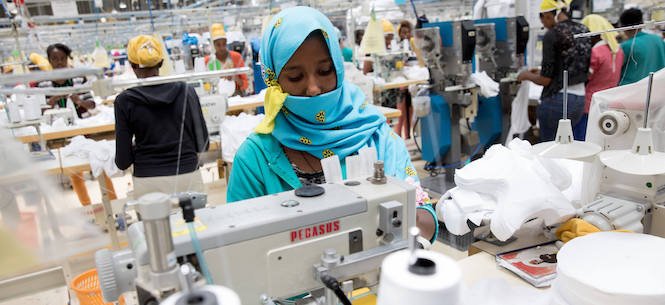Cheap Labor in Fast Fashion Companies
While many people may be aware of the issues of sweatshops and labor in the fashion industry, many do not understand its severity. Not only do workers have to work in poor conditions for low pay, which takes a mental and physical toll, children are also involved.
Due to the high demand for inexpensive clothing, this issue has only grown over time. For example, the fast fashion clothing brand Zara creates around 24 collections over a year's time span to keep up with rapidly created micro trends.
Working Conditions
The working conditions in these shops are incredibly unsafe. Arifa, a woman working in a sweatshop in Bangladesh, fears everyday at work, because the building is so unsafe it could burn down. There is bad ventilation, inadequate lighting, and unstable temperatures. Unlike other jobs, these workers do not get lunch breaks or paid time off.
Image Source: Kay Netfield/picture alliance via Getty Images
They get paid as low as $.10 to $.20 an hour, for up to 16 hours a day, 7 days a week. They also do not receive any healthcare benefits. Imagine having to decide the option of either being in debt with medical bills, or living with a potentially fatal medical condition. If they address these problems to a superior, they can be physically or mentally abused. In 2018 alone, there were over 540 reports from workers concerning abuse in some Asia-based sweatshops. These victims shared they were raped, forced overtime, beaten, and bullied.
Child Labour
Although child labour is illegal in many countries, there are still countries where it is legal and frequently used, such as Uzekistan, China, Pakistan, Bangladesh, India, Thailand, and Egypt. Since working in these factories doesn't necessarily require a high skill level, they target children. Due to their small hands, companies find it more efficient to pick from cotton fields without destroying the material.
Image Source: World Vision/photo by Mark Nonkes
Sadly, another reason is the children’s obedience and fear which makes them “easier to manage.” Sarah Carpenter was a worker at Cressbrook Mill as a young girl, who reports that she was beaten by her “master” on a daily basis when she would stop to take a break during her long hours of work.
Although these children do the same work as the adult workers, they get paid as low as 50 to 60 cents a day. Some other examples of jobs done by children in these sweatshops include sewing buttons, packing garments, trimming threads, embroidering, smocking, sequencing, and stitching.
Mental and Physical Effects on Workers
After working long hours in these terrible conditions, it takes a toll on the workers’ physical and mental health. Many of these individuals experience depression and anxiety, which can lead to suicide. It had gotten so extreme that buildings under Foxconn, a company based in Taiwan that builds electronics, had built nets to stop workers from jumping out the window. Although these shops were not for making garments, it shows the extremity of how damaging these jobs can be to people’s mental health. Anxiety can also cause insomnia and give them long sleepless nights. This can be stressful for the worker after having to work long hours and not being able to rest afterwards. Due to the poor ventilation, workers can also experience a decline in immunity, headaches, and problems with cardiovascular health.
Making a Change
Luckily, there are people who see this problem and are trying to make a change. There have been many protests over the years to help spread the word on this issue, as well as organizations raising awareness. Some organizations in America are the Clean Clothes Campaign, Global Exchange, and Green America. Raising awareness, or even just educating oneself, can make a change. We need to make consumers think about where their money is going.
Written by Kara Haas
Kara is a high school student who is an aspiring writer. She is hoping to study journalism in college to write about the fashion industry in the future. As well as having a passion for writing, Kara also loves to study fashion and try new, different looks out of her comfort zone. In her free time she loves baking, trying new makeup looks, and watching cartoons.


